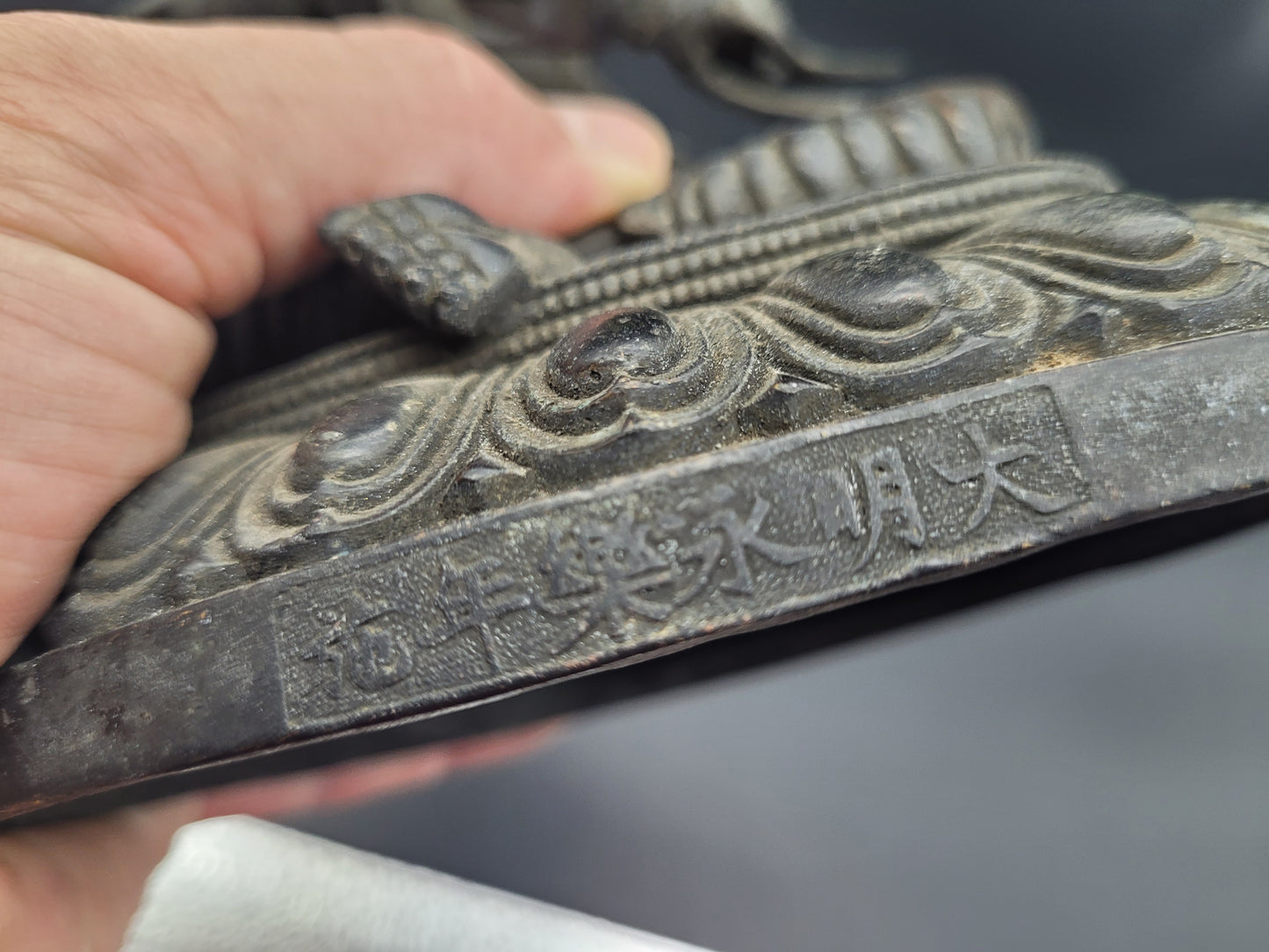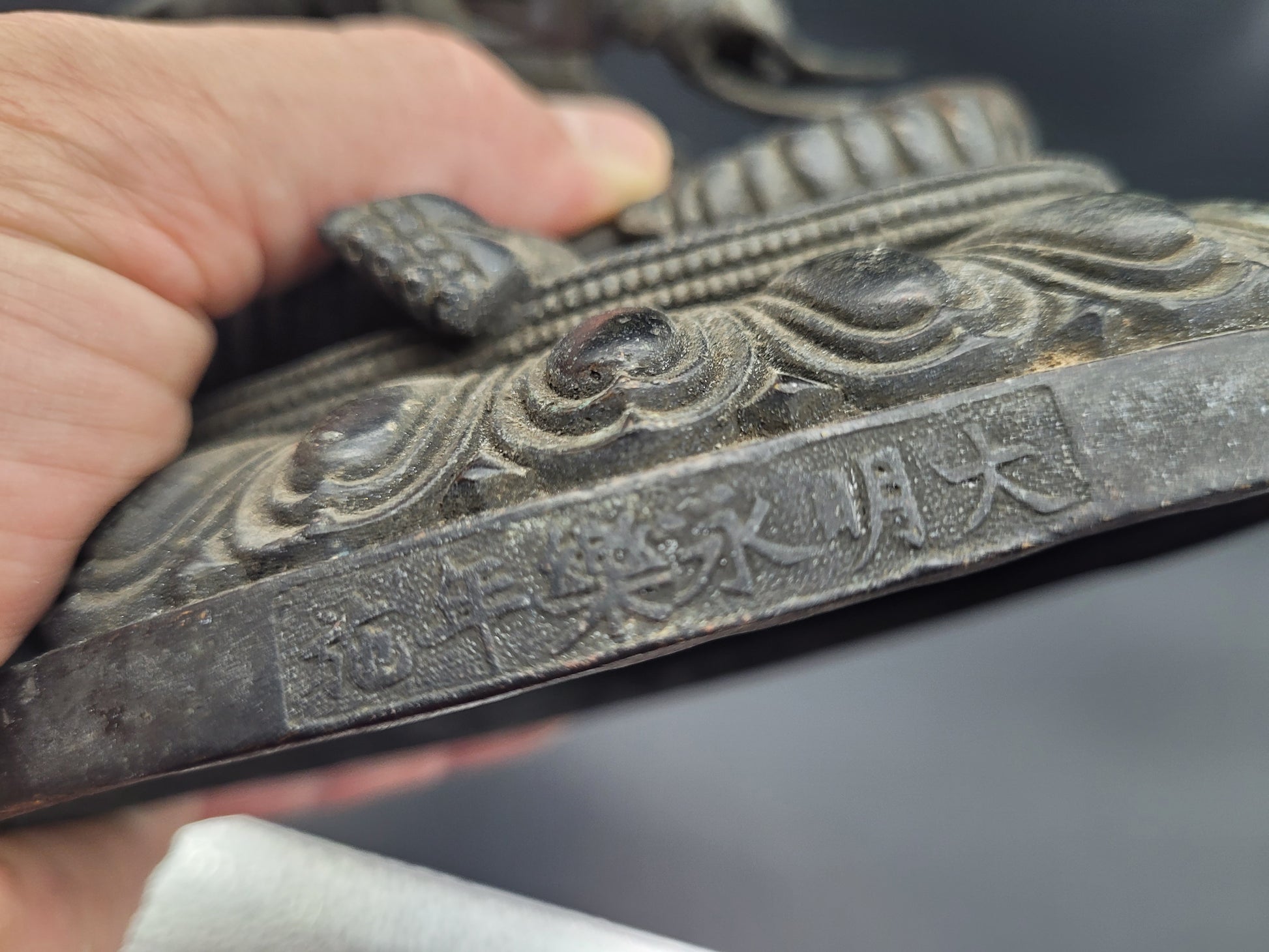Century Antiques
Antique 19th Century Bronze Buddha with Chinese Ming Mark Signed
Antique 19th Century Bronze Buddha with Chinese Ming Mark Signed
Couldn't load pickup availability
Antique 19th Century Bronze Buddha – Signed with Chinese Ming Mark
A remarkable antique 19th-century bronze Buddha, signed with a Chinese Ming mark, reflecting both authenticity and historical significance. The figure displays finely modeled details and a serene expression, characteristic of traditional Buddhist iconography.
The bronze exhibits a rich patina developed over time, enhancing the depth and character of the piece. It is possibly a Tibetan bronze, combining Chinese stylistic influence with Tibetan craftsmanship, making it a unique and culturally significant work of art.
Details:
-
Period: 19th Century
-
Material: Bronze
-
Mark: Signed with Chinese Ming mark
-
Origin: Possibly Tibetan
-
Type: Buddha figure
A highly collectible and decorative antique, ideal for enthusiasts of Asian art, Buddhist figures, or fine 19th-century bronzes.
Excellent Antique Condition ( SEE PHOTOS )
Height : 22cm
Width : 15cm
Any Questions Welcome
WE SHIP WORLDWIDE !!!!!!!!
Bronzes have been cast in China for about 3,700 years. Most bronzes of about 1500–300 bce, roughly the Bronze Age in China, may be described as ritual vessels intended for the worship of ancestors, who are often named in inscriptions on the bronzes.
Tremont Auctions’ May 17 sale of Asian art and antiques featured among many highlights some Seventeenth Century tea ceremony items from the collections of Charles L. Freer, William Van Horne, Hugo Munsterbeg and Alice Boney, as well as a single owner collection of Japanese “tsuba” sword guards. Leading the 525-lot sale when it achieved $42,840 was a Ming dynasty bronze figure of Manjushri Buddha in the “royal ease” mudra seated on the back of a lion; it had been estimated at $1/1,500.
Not surprisingly, given the wide reach of his teachings, the Buddha and other Buddhist deities have been interpreted widely, and in many different styles and materials. Artisans have used stone, stucco, terracotta, wood, lacquer, and metals such as bronze, gold, and silver to recreate them.According to Bruck, identifying a material can help anchor where a certain image was made, and in what time period. ‘Certain materials were favoured in different countries,’ he says. ‘The ancient region of Gandhara in Afghanistan and Pakistan, for example, favoured the sculptural flexibility of stucco, while the medieval Nepalese were among the finest bronze casters in the world.’

















